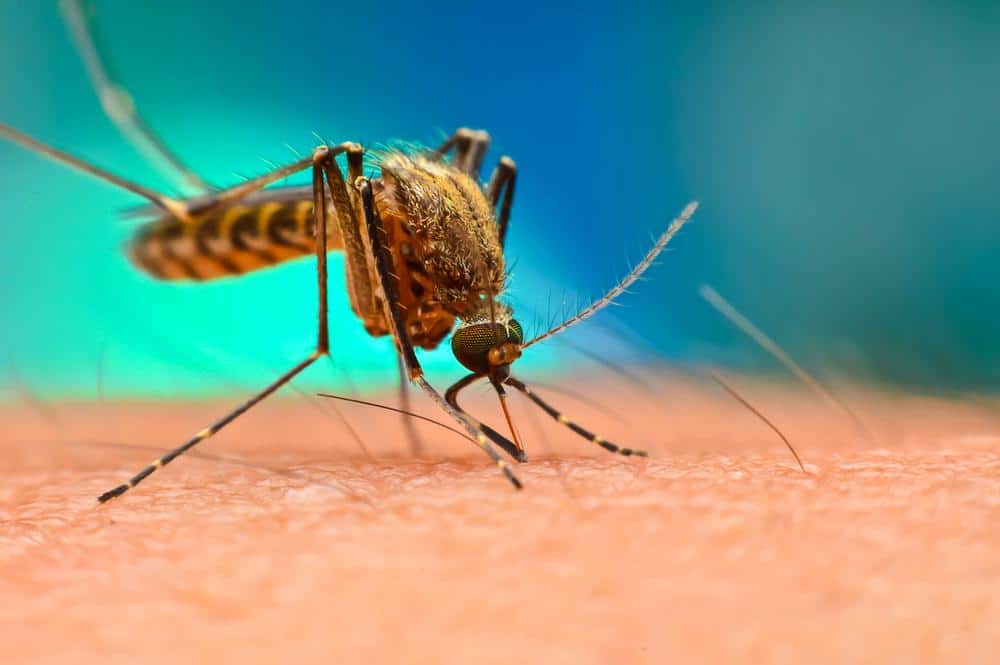
West Nile Virus (WNV) is a mosquito-borne disease and the leading cause of mosquito-borne illness in the continental United States. It’s primarily transmitted by mosquitoes, mainly species of Culex. But what does a West Nile bite look like, and how can you recognize it? In this article, we’ll dive into everything you need to know about West Nile bites, from their appearance to their symptoms, potential complications, and preventive measures.
A West Nile bite looks similar to any other mosquito bite, typically resulting in a raised, circular bump on the skin. However, it’s important to note that not all mosquito bites will transmit the West Nile virus, and the appearance of the bite itself may not be distinguishable from other mosquito bites. Symptoms such as fever, headache, body aches, joint pains, vomiting, diarrhea, or rash may develop in about 1 in 5 people infected with the West Nile virus, usually appearing within 3 to 14 days of infection. If you suspect a West Nile virus infection, consult a healthcare provider for proper diagnosis and treatment.
Appearance of a West Nile Bite
Most people infected with West Nile Virus do not develop any symptoms. However, about 1 in 5 people may have mild, flu-like symptoms, which include fever, headache, body aches, joint pains, vomiting, diarrhea, or rash. In some cases, a mosquito bite can result in a raised, circular bump on the skin where the bite occurred. It is important to note that not all mosquito bites will transmit the West Nile virus, and the appearance of the bite itself may not be distinguishable from other mosquito bites.
If you suspect you have been bitten by a mosquito carrying the West Nile virus and are experiencing symptoms, it is essential to consult with a healthcare provider for proper diagnosis and treatment.
Symptoms of a West Nile Bite
The initial symptoms of a West Nile virus infection can vary. About 1 in 5 people who are infected may develop a fever along with other symptoms such as headache, body aches, joint pains, vomiting, diarrhea, or rash. These symptoms usually appear within 3 to 14 days of infection. In severe cases, which are rare, the virus can affect the central nervous system, causing symptoms like high fever, neck stiffness, stupor, disorientation, coma, tremors, convulsions, muscle weakness, and vision loss.
Distinguishing a West Nile Bite
To differentiate a West Nile virus bite from other insect bites or conditions, it is essential to consider the symptoms and the history of possible exposure to mosquitoes that can carry the virus. A simple blood test can confirm a West Nile virus diagnosis by looking for antibodies (proteins that show your body is fighting the virus) in your blood.
The Risks of an Untreated West Nile Bite
If a West Nile bite goes untreated, there is a risk of developing severe complications, especially in older adults and those with compromised immune systems. Severe cases can lead to life-threatening illnesses such as encephalitis, meningitis, or West Nile neuroinvasive disease (WNND). Symptoms of severe illness may include high fever, headache, neck stiffness, stupor, disorientation, coma, tremors, convulsions, muscle weakness, vision loss, and paralysis.
Preventive Measures Against West Nile Bites
To avoid West Nile bites and reduce the risk of West Nile virus (WNV) infection, you can take several preventive measures:
- Apply insect repellent containing DEET, Picaridin, or IR3535 on exposed skin and clothing when outdoors.
- Dress in long-sleeved shirts and long pants to prevent mosquito bites.
- Avoid peak mosquito activity hours, which are during dawn and dusk.
- Use screens on windows and doors, and repair any holes to keep mosquitoes outdoors.
- Regularly drain standing water from items like tires, buckets, planters, toys, pools, birdbaths, flowerpots, or trash containers to prevent mosquitoes from breeding.
Treatment for West Nile Virus
There is no specific treatment or antiviral medication for West Nile virus (WNV) infection. In cases with mild symptoms, over-the-counter pain relievers can be used to help reduce fever and alleviate pain. For severe cases affecting the central nervous system, patients may require hospitalization, intravenous (IV) fluids, and intensive supportive therapy.
Prevention is the best way to protect yourself from West Nile virus. By following the preventive measures listed above, you can significantly reduce your risk of mosquito bites and WNV infection. If you suspect you or a family member might have West Nile virus, it is crucial to consult a healthcare provider for proper diagnosis and treatment.
Frequently Asked Questions
Can pets get West Nile Virus?
Yes, pets, particularly birds and horses, can get West Nile Virus. However, it’s important to note that the instances of pets getting sick from the virus are quite low.
Can West Nile Virus be transmitted from person to person?
No, West Nile Virus is not transmitted from person to person through casual contact. It’s primarily transmitted through the bite of an infected mosquito.
Can I get West Nile Virus directly from birds?
No, West Nile Virus is primarily transmitted to humans through the bite of an infected mosquito. Mosquitoes become infected when they feed on infected birds.
Is there a vaccine for West Nile Virus?
Currently, there is no vaccine available for humans. The best way to prevent West Nile Virus infection is to avoid mosquito bites.
Are certain people at greater risk for West Nile Virus?
Yes, people over 60 years of age are at greater risk for severe infection. People with certain medical conditions, such as cancer, diabetes, hypertension, kidney disease, and people who have received organ transplants, are also at greater risk.











